Black Music Month: ode to hip house + club music
a tribute to genres fusing hip-hop and house music.
Thanks for checking out my music writing. If you read this entire piece, love it and want to support my future work with a one-time tip/monetary gift, I’ve set up a Buy Me a Tea link here.
Happy Black Music Month! I present the “Ode to Hip House and Club Music” DJ mix, stream, and liner notes. This is a tribute to one of my favorite fusions: hip-hop and house.
If you love Hip-house, Chicago Juke, Detroit Ghettotech, Baltimore Club, Jersey Club, the music of Ballroom, and, more, this is for you.
This high-spirited music has influenced pop for decades, but its Black origins deserve more recognition. So expect a curation of documentaries and articles connecting the dots between two great African-American innovations.
This liner notes essay collection has six (6) parts:
Ode to Hip-House and Club Music (Keep scrolling)
Origins of Hip-House (Keep scrolling)
Chicago’s Ghetto House, Juke, and Footwork, and Detroit Ghettotech (6/10)
Parts 1 and 2 are below. I will be emailing the remaining parts to subscribers at the dates above. Head to the bottom of this page for my mix and stream dedicated to this sound.
Ode to Hip-House and Club Music
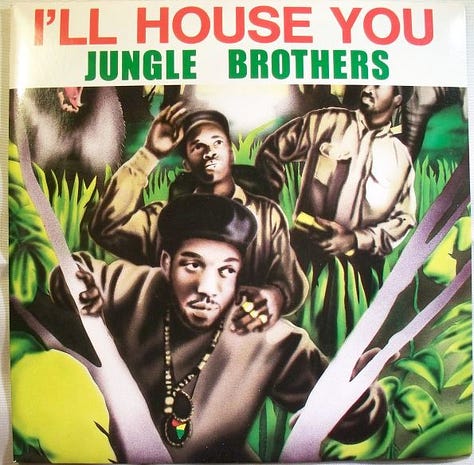
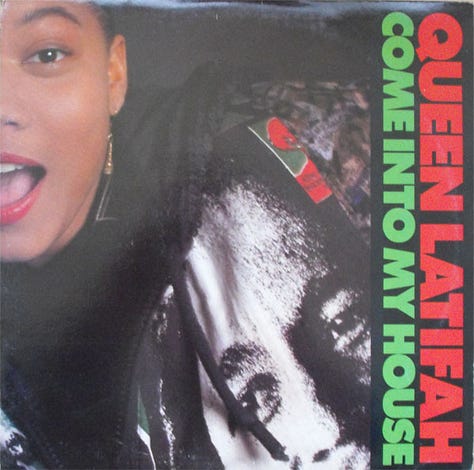
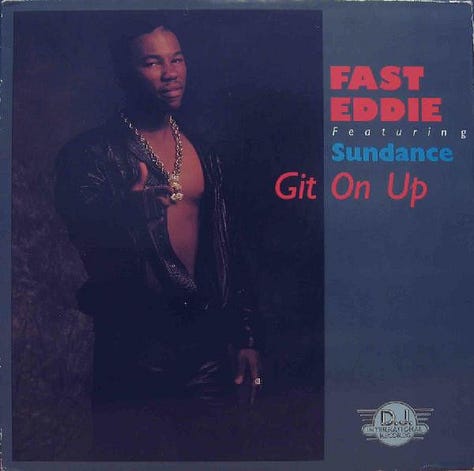
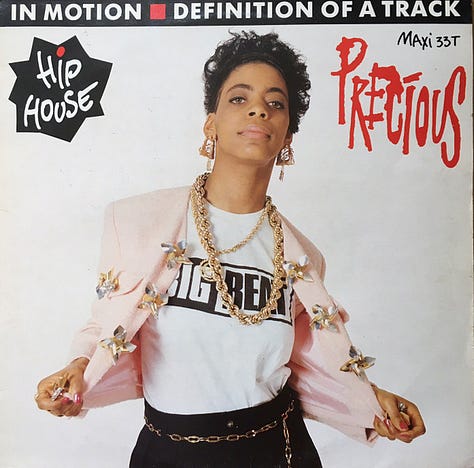
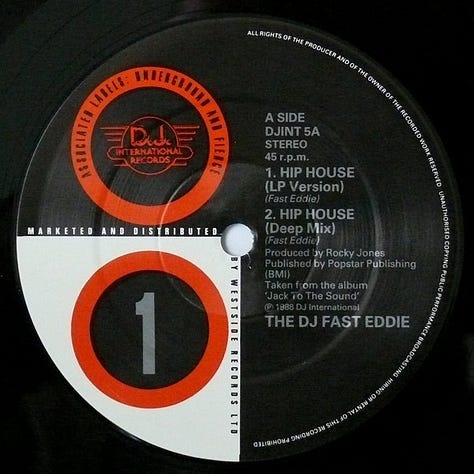
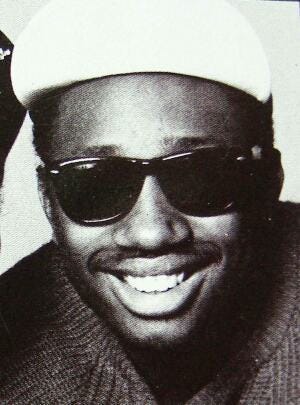
In the 1970s, disco music raised a generation. Some of those kids grew up to create hip-hop in New York City and house music in Chicago. In the late 1980s, a new cohort made a fusion aptly called: “Hip-house.” Fast Eddie, a Chicago teen producer and DJ at the time, popularized the genre.1
The story goes that Fast Eddie pitched a rap record to DJ International Records, a label where he was a producer. The label turned it down because they were strictly selling house records. As a workaround Fast Eddie rapped over a house beat, according to an oral history of hip-house on Red Bull Music Academy Daily. “I just wanted to hear something different,” he said. “I was really into hip-hop before I was into house music.” Eddie experimented with house instrumentals by sampling hip-hop drum loops and adding high-speed scratching. (Listen to 1988’s “Yo Yo Get Funky”). A movement followed. Rappers from the Windy City to New York City, North Jersey, D.C., and London would lay braggadocio bars over dance-friendly beats, generally between 122 and 125 BPMs. By the early 90s, it fizzled out of the mainstream.
“I just wanted to hear something different,” he said. “I was really into hip-hop before I was into house music.” — Fast Eddie
I started these liner notes at hip-house because it is an important beginning point for what evolved into modern club music. In the 1990s, Chicago house music, formed by Black queer DJs and producers, and New York City’s hip-hop continued to spread around the Midwest and East Coast by African-American communities. Young people from these cultures continued taking bits and pieces of hip-hop and house to craft the new underground sound that was raw, grittier, and less conventional than the original hip-house. From the 1990s and on, Chicago Ghetto House, Juke & Footwork, Baltimore Club, Jersey Club, and New York City’s Ball culture, were thriving music scenes influenced by both genres. Miami Bass was also instrumental in this evolution. Producers maintained the house BPMs or sped them up. They sampled house and hip-hop classics, incorporating loops, scratching, breakbeats, chants, monologues, emceeing, flows, lyricism, and storytelling. They used limited resources and equipment to expand sonic imagination and change the future of music. Some artists became more popular overseas in Europe and Asia than in the United States.
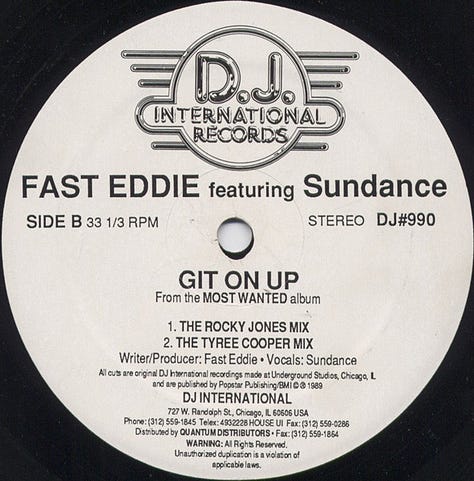

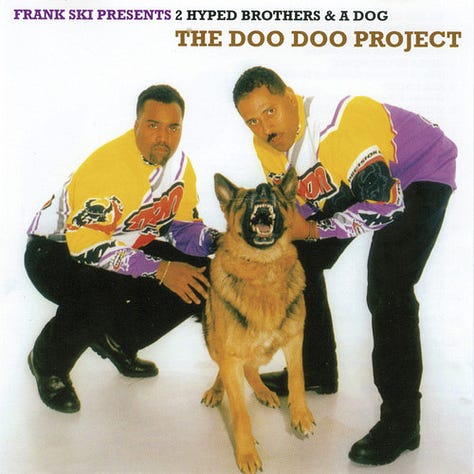
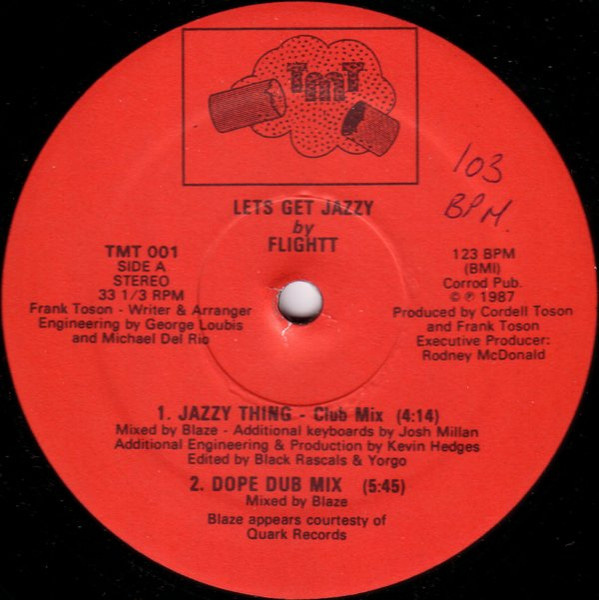

These scenes had whole ecosystems and key players. The DJs improvised in real time and learned what made the party move. They would incorporate sounds popular with their audience into their recordings. Then there were sacred spaces —clubs, basements, warehouses, parks, and any open space — where the DJ and the dancers communed and collaborated. The emcees engaged the crowd, helping to shape the mood and uplift with words that took dancers on a journey, telling stories of their neighborhood and personalizing the music even more. There were the dancers, whether looking to fill the space and move their bodies or the hardcore dance crews who choreographed and battled for recognition and bragging rights. They carried on ancestral movements and reinvented them time and time again.
By the 2010s, a nostalgic sound of early hip-house and ball culture made a resurgence in the mainstream, with Azealia Banks leading the way. The influence of the combination grew since. Hip-hop producers sampled house music by slowing the tempo down. Pop charts were filled with electro-hop’s fist-pumping beats from Miami-Dade County artists Flo Rida and Pitbull. Masego’s TrapHouseJazz and producer Kaytranada, and his special blend of house, hip-hop, and funk, emerged on Soundcloud. South African Gqom and Amapiano incorporated raps and chants into their electronic sounds. Since 2020, Cookie Kawaii's “Vibe (If I Back It Up)” took Jersey club into pop-rap — the bouncy kicks are found all over now: Ice Spice’s “Deli” (2023), Nicki Minaj’s “Everybody” (2023), and Beyoncé’s “SWEET HONEY BUCKIIN'“ (2024) to name a few. It’s also more common to find DJs mixing many club genres together now on popular online DJ platforms, like this one from DJ Nico.
Though it’s trendy for present artists, producers, and DJs to dabble in club music, these genres weren’t made to top the charts — they originated as the soundtrack to communities empowering Black and Brown youth on the dance floor. It was a lifestyle for the real partiers, dance crews, their battles, and voguers. In these spaces, they expressed their truths and sweated away their problems. This music was the antidote to the cold realities that awaited young people outside the clubs.
Presently, while hip-hop and house fusion are alive and well, the people who birthed these movements face erasure and appropriation. For Black Music Month, let’s remember how it began, support those advocating to preserve it, and take care of the people integral to the culture.
I invite you to watch, listen, learn, and share.
Origins: 1988 — 1990
Chicago Hip-House Documentary (1989)
This 9-minute short takes us back to the height of the hip-house movement, with Fast Eddie providing its origin story. Sundance, the first lady of hip-house and the first female rapper from Chicago, also shares her insights. Other acts featured: Chicago’s Tyree Cooper, New Jersey artists KC Flightt and Precious, and New York duo Too Nice.
In Our DNA: Hip House (2023)
This is a must-see. While researching hip-house, I came across In Our DNA: Hip House, an incredibly well-crafted three-part docu-series that archives the foundation of Chicago house music culture, by Whitney Clinkscales. It delves into how it evolved out of disco and the socio-economic conditions and parallels between Chicago and New York City that allowed for the emergence of hip-house genres. Mike Dunn of the Chosen Few DJs, DJ Spen, Crystal Waters, DJ Fast Eddie, and many more essential voices are interviewed.
Other notable resources:
DJ Mix: Master Mix: The DJ Fast Eddie (1989) — a quick mix from the original hip-house rapper.
Mixtape: Hip House Forever — DJ Too Kool Kris (Year: Unknown) — this covers the first generation of hip-house in the 1980s.
Article: Hip House: An Oral History — more in-depth interviews with Fast Eddie, Tyree Cooper
Acts to know:
Fast Eddie, Tyree Cooper, Precious, Sundance, Bill Coleman, KC Flightt, Queen Latifah, Jungle Brothers, Technotronic, Cookie Crew
Ode to Hip House DJ mix and stream
I created a mix taking listeners on a journey through hip-house and club music, from 1988 to 2020. This covers some essential records and only scratches the surface of what these genres offer.
Stream: Watch the visual stream below on Wednesday, June 5th, 5pm EST — 1am EST.
https://youtube.com/live/J9viRdJyZV8
Thank you to my friend Ryan C. Hamilton for shooting and editing this pre-recorded stream.
***I will be streaming this visual throughout the month. More dates provided soon.
Audio of mix below
Tracklist available here.
Read Part 3: Ode to New York City’s Ballroom Music
Thanks for checking out my music writing. If you read this entire piece, love it and want to support my future work with a one-time tip/monetary gift, I’ve set up a Buy Me a Tea link here.
Fast Eddie is credited for coining and launching the hip-house scene in Chicago during the spring of 1988 and experimenting with the fusion. A year prior, in the U.K., duo Cookie Crew rapped over a Beatmasters house production, “Rock da House.” Cookie Crew’s cut was released first. But Eddie’s inspiration came directly from his love for house and hip-hop and he lived in the bedrock of culture that birthed these genres. That both tracks surfaced within a year of each other, speaks to the influence both genres had on music-makers of this generation globally.




